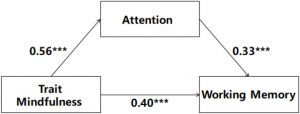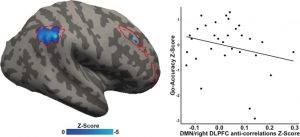Improve Cognitive Ability in Elementary School Children with Mindfulness
By John M. de Castro, Ph.D.
“mindfulness [has been linked] to two core social-emotional skills: self-regulation and self-awareness. Skills in these areas teach students not only how to recognize their thoughts, emotions, and actions, but also how to react to them in positive ways.” – Waterford.org
Childhood is a miraculous period during which the child is dynamically absorbing information from every aspect of its environment. This is particularly evident during the elementary school years. Mindfulness training in school has been shown to have very positive effects. These include improvements in the academic, cognitive, psychological, emotional and social domains. Importantly, mindfulness training in school appears to improve attentional ability which is fundamental to success in all aspects of academic performance. But there have been few studies comparing the effects of mindfulness training to other types of training for elementary schoolchildren.
In today’s Research News article “Mindfulness-Based Versus Story Reading Intervention in Public Elementary Schools: Effects on Executive Functions and Emotional Health.” (See summary below or view the full text of the study at: https://www.frontiersin.org/articles/10.3389/fpsyg.2021.576311/full?utm_source=F-AAE&utm_medium=EMLF&utm_campaign=MRK_1679696_a0P58000000G0YfEAK_Psycho_20210713_arts_A ) Milaré and colleagues recruited 2 classrooms of children 8-9 years of age. One class received an 8-week mindfulness training that met twice a week for 30 minutes. The instructions were on awareness, generosity, and heartfulness. The other class received 8 weeks of story reading that met twice a week for 15 minutes. The stories were targeted to moral and emotional issues appropriate for children. They were measured before and after training for stress, anxiety, depression, positive and negative emotions, and executive functions including attention.
They found that in comparison to baseline both groups had significant improvements in executive functions including attention, processing speed, and controlled attention. On the other hand, the story reading but not mindfulness group had decreases in depression and negative emotions.
It should be noted that there wasn’t a control condition, so improvements from baseline might have been due to a number of confounding factors including practice effects, expectancy effects, experimenter bias etc. In addition, there wasn’t random assignment of the children to condition. But in adults it is well established that mindfulness training produces improvements in executive functions including attention. This is not surprising as mindfulness training involves focusing attention which is important for cognitive performance. The present study suggests that these benefits also accrue to 8-9 year-old children. Improving cognitive skills particularly attention in children is important and may well lead to improved academic performance.
It is interesting that targeted story reading produced similar cognitive benefits and also some emotional improvements. This may be due to the fact that the stories included emotional issues pertinent to children while the mindfulness training did not include mindfulness of emotions. This suggests that the mindfulness program could be improved by including paying attention to emotions.
So, improve cognitive ability in elementary school children with mindfulness.
”Students . . . have been spending anywhere from 10 to 12 minutes per day on mindfulness exercises. But classes appear to be gaining more instruction time as a result because there are fewer outbursts and disruptions.” – Emily DeRuy
CMCS – Center for Mindfulness and Contemplative Studies
This and other Contemplative Studies posts are also available on Google+ https://plus.google.com/106784388191201299496/posts and on Twitter @MindfulResearch
Study Summary
Milaré CAR, Kozasa EH, Lacerda S, Barrichello C, Tobo PR and Horta ALD (2021) Mindfulness-Based Versus Story Reading Intervention in Public Elementary Schools: Effects on Executive Functions and Emotional Health. Front. Psychol. 12:576311. doi: 10.3389/fpsyg.2021.576311
Introduction: In this study we compared the effects of a mindfulness-based intervention (MBI) with a story reading intervention (SI) on the executive functions and psychological profile of children in two different public schools in São Paulo, Brazil.
Methods: In this controlled clinical trial, 207 children aged 8 to 9 years old responded to the Five-Digit Test (FDT), stress levels, depression, anxiety, positive and negative affect, at baseline (T0) and 8 weeks later (T1). From T0 to T1, school 1 participated in MBI classes and school 2 in IS classes.
Results: In school 1 (MBI), children improved their scores on all tests except reading (errors) and counting (errors) compared with school 2. No differences were observed between groups in terms of emotional health.
Conclusion: It is feasible to implement MBI or SI in Brazilian public schools. Students in the MBI group presented broader effects in executive functions, while students in the SI group showed a trend toward reduced negative affect and depression symptoms.
Highlights
This study contributes to the scientific evidence of the positive effects of Mindfulness and Story reading on executive functions and emotional well-being in children. Neither intervention had significant effects on depression, anxiety, stress, positive, and negative affect (although Story reading showed a trend in reducing negative affect and depression), while the Mindfulness-Based Intervention had relatively broader effects on executive functions.









